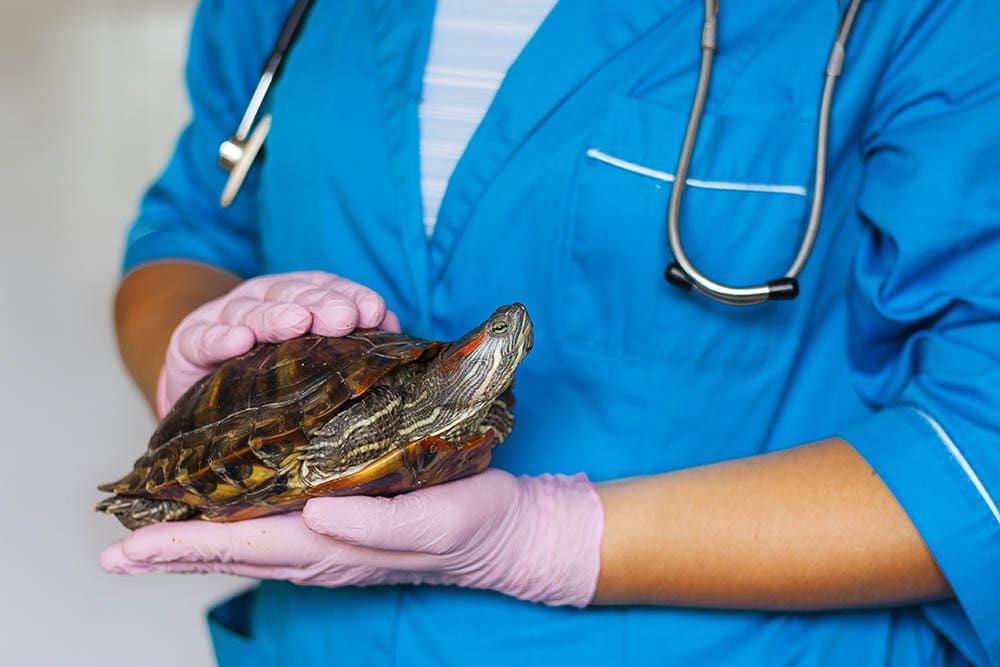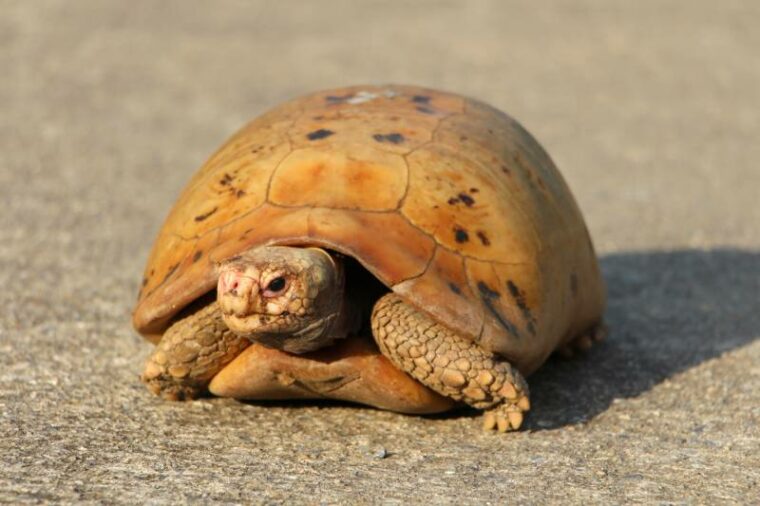
Click to Skip Ahead
Tortoises are long-lived land reptiles that move slowly but purposefully through their lives. They have become popular pets in the US, and many rescues have now opened up to rehome tortoises that their owners have unfortunately abandoned or relinquished. Baby tortoises can be easily found in pet stores nationwide, with many species taken in by avid exotics enthusiasts. However, if you rescue a tortoise or get a baby, you might wonder how old they are. We’ll discuss seven tips that can help you determine the age of your tortoise no matter where they came from!
The 7 Tips on How to Tell the Age of a Tortoise
1. Contact the Breeder
The only verifiable, meaningful way to accurately determine your tortoise’s age is by finding out when they hatched. Unfortunately, this is difficult for many tortoise owners, particularly those who’ve adopted a tortoise into their family! However, by contacting the breeder or seller of your tortoise, you can find out precisely when they were born and do the math to find out their age.
An approximation can also be given by rescues or veterinarians who find out information on previous owners. Other methods can give you a rougher age estimation, but discovering the hatch date is the only definitive way of being accurate.

2. Compare Sizes
One way to see whether your tortoise has reached adulthood or old age is by comparing it in size to another tortoise of the same species and gender. Female tortoises grow larger than males, so make sure to use a same-sex pairing. Looking at the overall size and shell size of the two tortoises can give you an estimated age, particularly if you know the age of the tortoise you’re comparing!
3. Determine if It’s Wild or Captive
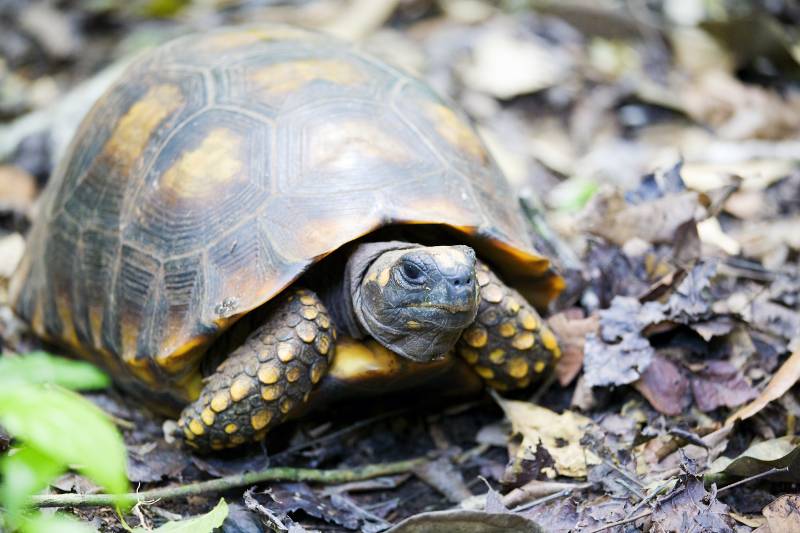
In the wild, tortoises have a much more difficult life than those in captivity. There’s more competition for food, and they must stay safe from predators, reproduce in dangerous environments, hibernate, and defend their territory. All this puts more strain on their bodies, and a tortoise unlucky enough to be in an area with poor-quality food will grow slowly compared to those kept as pets.
Some studies reveal that captive tortoises grow faster than wild ones due to the high-quality and nutritious food they’re fed. If your pet was born in captivity and raised as a pet, they’re likely to be younger than a wild tortoise of the same size for that reason!
4. Examine the Shell Quality
The basic principle of checking your tortoise’s shell quality is to see if they are very young (under a year in most cases) or very old. This seems like a large gap, but it can be a useful indicator of age if you cannot accurately determine when your tortoise was born. This is useful for mating, veterinary, and husbandry reasons, plus it’s nice to know!
If your tortoise is small with a flexible shell, they are probably less than a year old. Most tortoises are born with flexible shells to allow for their growth during their first year, but some shells can take up to 8 years to fully harden. It’s important to note that only healthy, young tortoises should have soft shells; adult tortoises with soft shells could be suffering from a lack of calcium or vitamin D or may have an illness and should be seen by a veterinarian.
Old tortoises can have scratches, dings, and dents in their shells, which can indicate age. In addition, if their shells look worn smooth, it can also indicate older age. However, scrapes and dents are less reliable as an indicator of age, as a fall from height could cause shell injury, even in young tortoises.
5. Check the Quality of the Scutes
There is a myth that counting the rings on tortoise scutes (shell plates) can tell you how old they are, similar to counting the rings in a tree. This is, unfortunately, not a reliable way to age your tortoise; the rings of growth on the scutes show periods of good nutrition and fast growth rather than years passed.
For example, a tortoise with 10 rings on its scutes could be 5 or 30 years old, depending on its diet. Looking at how worn the scutes are can be a better way of estimating age, but this can only work for older tortoises. Tortoises that spend time in the dirt, sand, or dig burrows are likely to have sharp edges and raised areas on their shells worn down over the years.
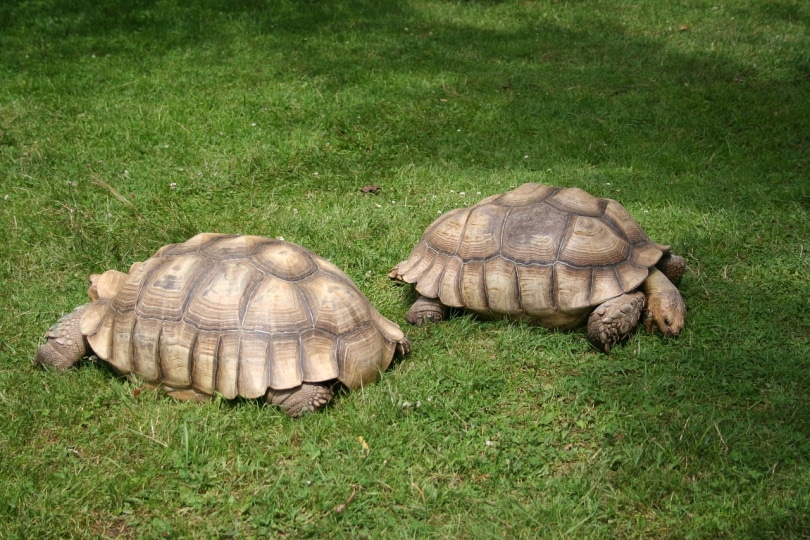
6. Examine the Coloration
A tortoise’s shell can indicate how old they are by its color. This is not the most accurate method of telling how old your tortoise is, but the hue of their shells helps because older tortoises have darker shells.
In general, tortoise shells darken with age. Some medical conditions can cause a tortoise’s shell to change color (such as shell rot or fungal infections), so take them to your vet for an exam if you’re worried about the color of your tortoise’s shell.
7. Check the Old Age Indicators
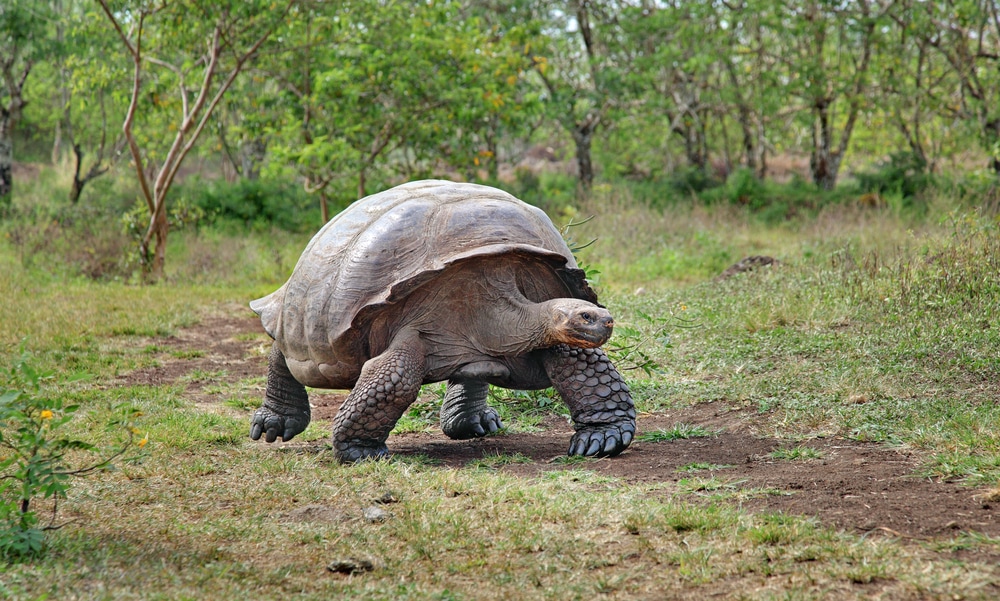
Some tortoises, like most animals, change as they age. Tortoises can live upwards of 150 years and often easily reach 100. However, that doesn’t mean they don’t sometimes suffer some of the same wear and tear that humans do when we age; these changes can help you determine whether or not your tortoise is an adult or is creeping into old age.
It’s worth mentioning that studies have shown that some species of turtle and tortoise don’t age past adulthood at all, and they “turn off” the genes that cause issues we associate with old age. However, there are certainly some indicators you can watch out for:
Tortoise Life Stages
Tortoises have four life stages, beginning with an egg and ending as a fully grown adult tortoise. These stages can take different lengths of time depending on the species of tortoise, but the most common pet tortoises (Hermann’s Tortoise, Red-Footed Tortoise, Spur-Thighed Tortoise) are all similar.
Gestation & Stage 1
The gestation period has a huge range, with some eggs taking 3 days to appear and some taking 3 years! Once the female lays the eggs, they are covered and incubated for around 8–12 weeks. Eggs in the nest are the first stage, and they must be incubated at the right temperature for the baby tortoises to grow correctly.
Stage 2
Hatchlings are the second stage, and they look like tiny, fully formed tortoises. The sex of the hatchlings is determined via the temperature the eggs were incubated; this process (known as environmental sex determination) produces males at lower temperatures and females at higher temperatures. Next, the tiny tortoises crack the eggs using a small growth on their nose called an egg tooth.
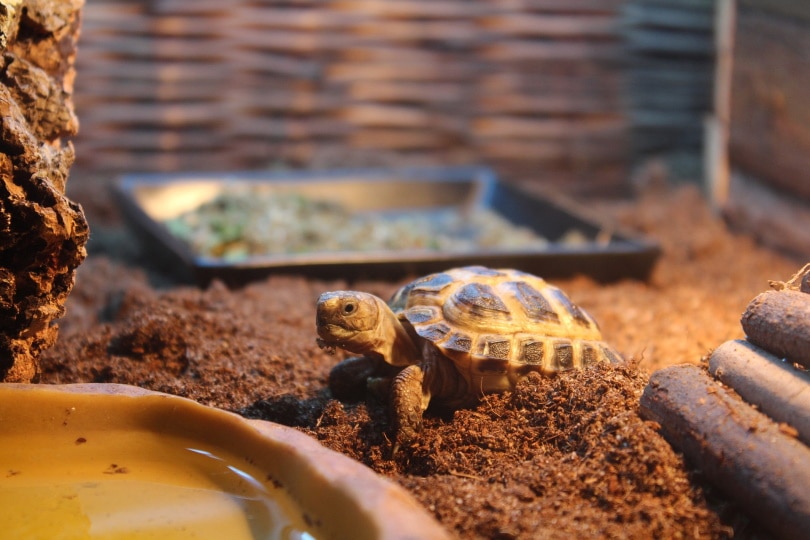
Stages 3 & 4
Hatchlings will need plenty of sustenance to thrive, ensuring their growth into the third and fourth life stages: juvenile and adult. The only real difference between these stages is sexual maturity, which takes around 5 years but can take longer or sooner, depending on the species.
Adult tortoise shells are hard and have visible growth rings; they’re larger and can reproduce. Remember that most tortoises can live for 50 years, many live to over 100, and there are even species that have lived for nearly 200 years!
Final Thoughts
Figuring out how old your tortoise is can seem like an impossible task, and truthfully, it’s very difficult unless you know when they were born. However, you can make good estimates based on the tips we discussed above and figure out their life stage. Your tortoise’s age can be useful to know when caring for them, as their age dictates certain medical conditions or husbandry needs (such as when to breed).
- See Also: African Spurred (Sulcata) Tortoise
Featured Image Credit: seasoning_17, Shutterstock



